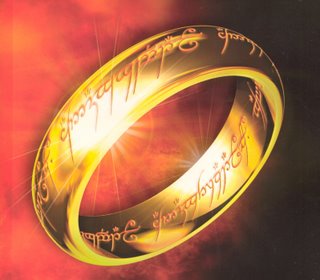
The Fellowship of the Ring, or Company of the Ring, as described in the first volume of The Lord of the Rings, is a union of 9 representatives from each of the free peoples (Dwarf, Elf, Hobbits, Men, Maia/Istar) in Middle-earth, the number chosen to match the 9 Ringwraiths.
The Fellowship is entrusted with the task of assisting and protecting Frodo Baggins as he bears the One Ring to the land of Mordor where he can destroy it by throwing it into Mount Doom. The 9 set out on their quest at the beginning of winter on December 25, 3018 T.A. after their Fellowship was formed at the Council of Elrond.
The fellowship is led at first by Gandalf, but after his fall in the mines of Moria, Aragorn leads them until Boromir's seduction by the ring coupled with the attack of the Orcs effects the breaking of the Fellowship.
ABOUT THE MUSIC (MACRO–VIEW)
Composer: Howard Shore
The music in general is lyrical and rich in ethnic and vocal fantasy.
I feel that Shores compositional approach to bring forth the action-packed scenes were more subdued and deep, unlike what one would usually find or hear in James Bond movies (which contains lots of percussion). Shores action music is deeply woven into a choral fabric with interweaving textures that provides the magical feel required in the storyline of ‘The Lord of the Rings', without the need to use prominent percussion writings to inject that excitement.
Orchestration, Texture and Contrast
To heighten the sense of importance and urgency in the music, Shore basically makes use of orchestration–such as large orchestral and choral ensembles, to achieve that dense and broad texture.
Sometimes the massive and gothic choral passages, so deeply dominated by the male singers, provide cues that are genuinely frightening, both religiously and otherwise. The dark and suspenseful music illustrate the temptation of the ring and the dangers lurking within the land of Middle–Earth, and the paranoia that are working in the hearts of some members of the Fellowship.
Bombastic and heroic choirs and music such as those found in “Treason of Isengard” reflect the sacrifices of brave men and the bravery of the members of the Fellowship despite being outnumbered by the forces of evil.
Lighter moments, through the use of staccatos found in the "Concerning Hobbits" cue, offer a break from the awe, thus providing stark contrasts within the music.
Of Motivic Idea
The main musical theme in any film plays a vital role in captivating audiences and listeners. In LOTR, the main theme is generally lyrical and heroic, aimed at the brass, but restrained by a unified and realized string section. In fact, after listening to the tracks from the trilogy, I discovered that the most effective and tender moments of this theme are performed by the weaving violins, cellos, and basses while the brass offer a soft accompaniment. Woodwinds are sometimes employed to inject the ethnic feel of a particular location into the music.
1 comment:
JR: Nice description of the music writing in this film score, I would love to see you apply some of the things we've learnt in class to one of the numbers, e.g. phrase analysis, harmonic analysis.
Post a Comment